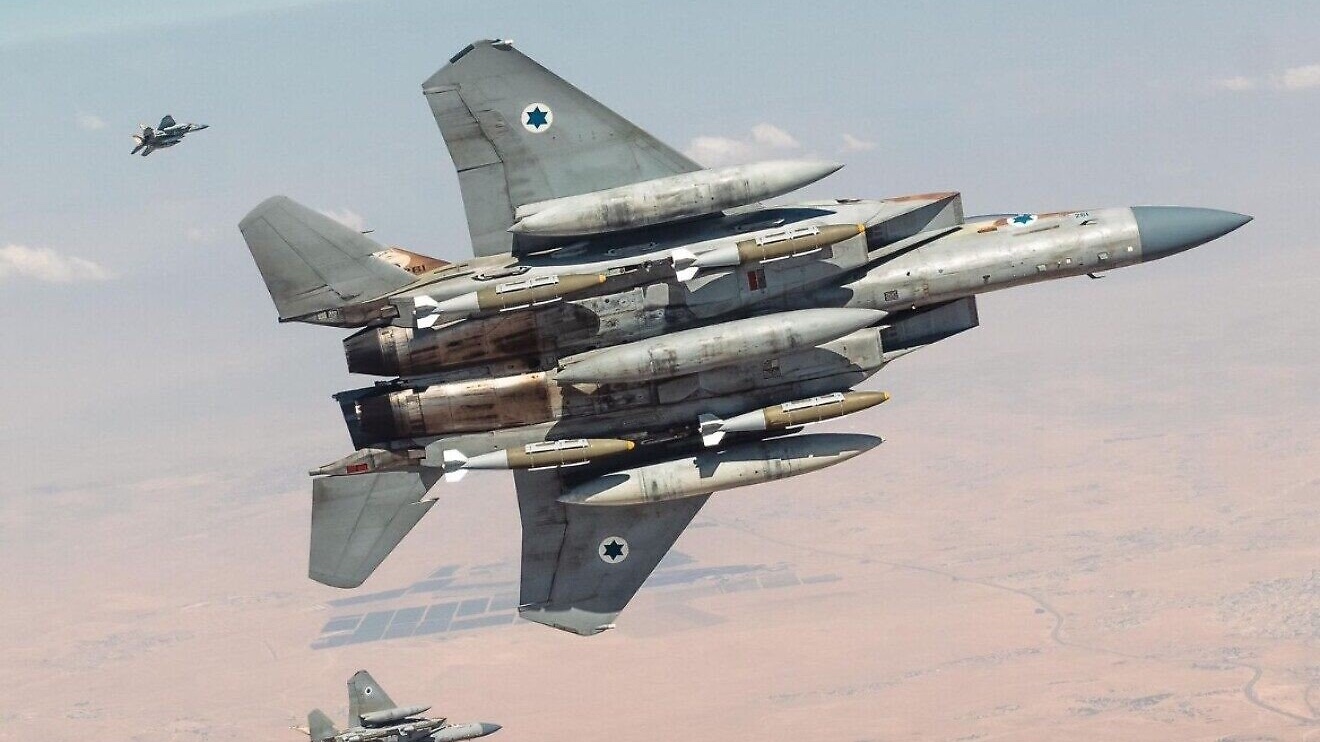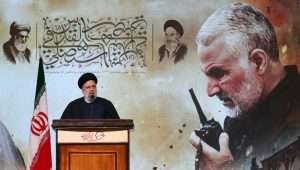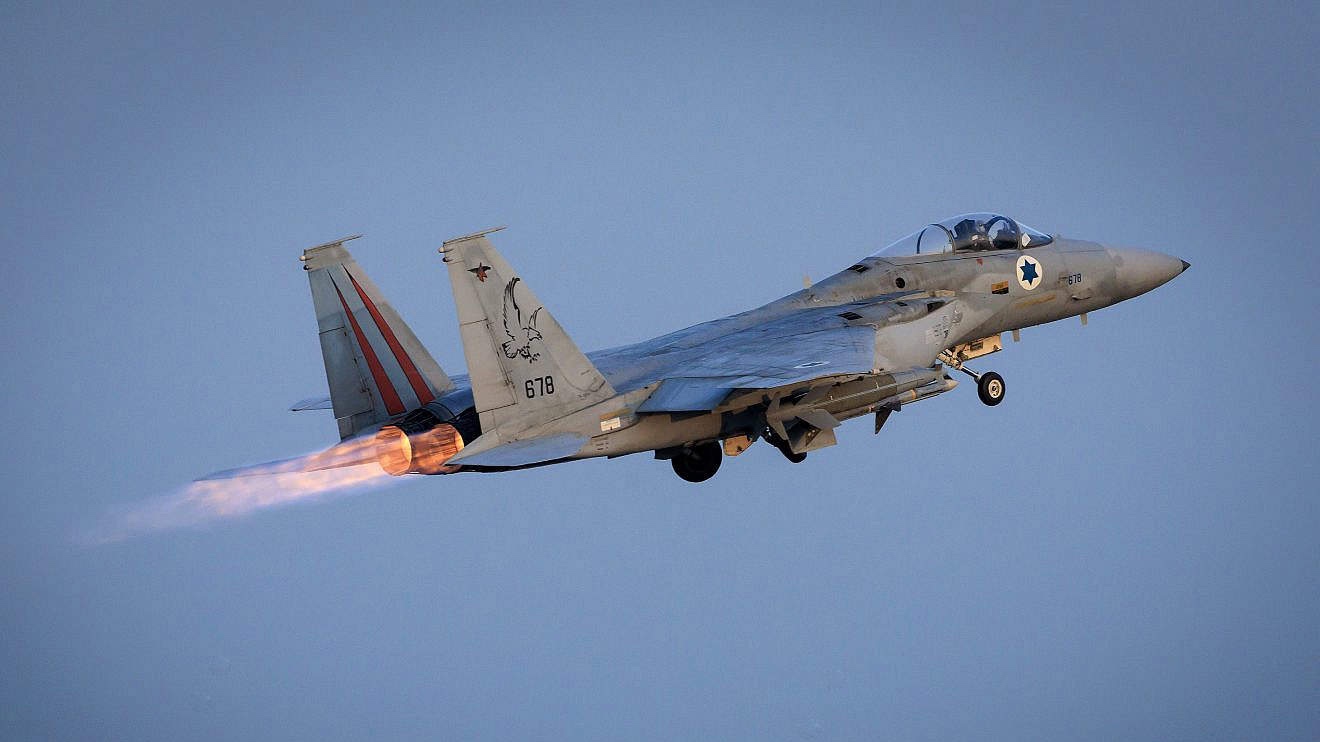(JNS) A team of former senior United States military commanders released in recent days a comprehensive assessment of the 12-day war (June 13 – 25) fought between Israel and Iran, revealing new details about the scope, speed and strategic impact of the operations that reshaped the Middle East earlier this year.
The report, published on Nov. 20 by the Washington DC-based Jewish Institute for National Security of America (JINSA), concludes that Israel’s “Operation Rising Lion” was an “operational masterpiece” that not only removed an existential threat to the Jewish state by severely degrading Iran’s nuclear and missile programs, but also advanced American national security interests.
The assessment drew on an August fact-finding mission to Israel by a delegation that included Gen. Charles Wald (United States Air Force, ret.), former deputy commander of US European Command; Lt. Gen. (United States Army, ret.) Robert Ashley, former director of the Defense Intelligence Agency; and Vice Adm. Mark Fox (United States Navy, ret.), former deputy commander of US Central Command.
The authors were granted significant access to Israel’s government, intelligence community and the Israel Defense Forces to reconstruct the decision-making process and battlefield performance of the campaign.
“We came away convinced that in Operation Rising Lion, Israel displayed intelligence and military capabilities that exceed any of America’s allies in the world,” Wald told a press briefing on the report on Wednesday. “More than just operational excellence, Israel achieved major strategic effects advancing not just its own, but America’s national interests.”
The report said the operation was “30 years in the making,” following decades in which “Iran worked towards Israel’s destruction” along three main efforts: Its nuclear program, ballistic missile capabilities, and the Iranian proxy network.
Referring to Operation Rising Lion, Wald stated, “It’s probably the most impressive military operation I’ve ever seen or been a part of.”
The report also highlights some differences that exist between the US and Israel from a strategic standpoint when it comes to Iran.
Operation Rising Lion began with a synchronized opening strike that eliminated around 30 senior Iranian military leaders, IRGC commanders, and nuclear scientists within the first four minutes. This “decapitation” strike threw the regime’s command and control into disarray. The fact that the IRGC’s planned “ring of fire”—its network of terrorist armies led by Hezbollah and Hamas—had been so severely degraded before the Israeli operation in June helped prevent a coordinated Iranian axis response, the report noted, stating that Israel had been able to “handle one problem at a time.”
According to the authors, the opening blow was made possible by “intelligence dominance” as well as “operational ingenuity and tactical lethality,” allowing Israel to track Iranian individuals in real-time. “The intent, as one high-level official told us, was not simply to destroy things, but to break spirits,” the report stated.
Ashley noted that the intelligence preparation for the strikes was exceptional and provided deep insights into the Iranian defense system. “You’re actually tracking individuals in real time, and, literally on the fly, you’re making adjustments,” Ashley said. “So the intelligence preparation for what really were surgical strikes was very impressive.”
The assessment also highlighted the critical role of the F-35 stealth fighter, which Israeli pilots flew in “beast mode”—carrying external munitions—for the first time in a deep-strike capacity.
“The F-35 became indispensable to the [Israelis],” Ashley explained. “They would not do an operation without the use of the F-35, including nothing in the future. So it was really this fifth-gen fighter that was a huge enabler for the other fourth-gen aircraft [F-15s and F-16s].”
One of the most significant revelations in the report is the immediate trigger for the war. While Israel had been preparing for the confrontation for decades, the decision to strike in June was driven by intelligence that Iran was preparing a massive preemptive attack.
“Israeli intelligence indicated that Iranian officials, well aware of their sudden vulnerability and the very real potential of an Israeli attack, were seriously debating launching between 700 and 1,000 ballistic missiles in a preemptive strike against Israel,” the report stated. “There was a real concern that hundreds of missiles might rain down on Israeli bases, cratering runways, destroying jets, and effectively neutering Israel’s air force.”
This intelligence, combined with alarming warning signs that Iran was accelerating its nuclear weapons research towards a “cruder, but still testable and deployable” nuclear device, caused Israel to abandon its initial plans for a limited surgical strike in favor of a comprehensive campaign.
“This new operational plan—first conceived in the spring of 2024 but only coming together in the last months of the year—hinged on achieving air superiority and utilizing it to neutralize a much bigger portion of Iran’s nuclear program, eliminate high-value individuals, and destroy critical elements of Iran’s ballistic missile capabilities,” the report detailed.
The report also provided new details on the American role in the conflict, specifically concerning “Operation Midnight Hammer,” the US military’s first direct kinetic strike on Iran’s nuclear program. On June 22, a US strike package including seven B-2 bombers dropped massive ordnance penetrators (MOPs) on the deeply buried Fordow and Natanz enrichment facilities. This was followed up by a US submarine striking the Isfahan nuclear site with more than 30 Tomahawk cruise missiles.
While CENTCOM’s original plan for envisioned an approach from the south, Israeli commanders helped plot an “optimal route by suggesting that an approach from the west would be more secure for the US bombers due to Israel’s control of the skies,” the report stated, shedding new light on tight military planning between Israel and the US.
Fox emphasized that the integration of Israel into the US Central Command (CENTCOM) in September 2021 was a decisive factor in the war’s success. “I think it’s really impossible to overstate the importance of the fact that Israel was moved into the Central Command Area of Responsibility,” Fox said, adding that a decade ago, this would have been considered “a pipe dream.”
The cooperation extended to air defense, where US and Israeli systems achieved an 85 percent interception rate against Iranian missiles that threatened population centers. “The United States reportedly used 150 THAAD interceptors and 80 SM-3 interceptors in defense of Israel, a clear signal of US support,” the report noted.
Despite the tactical success, the authors warn that the threat from Iran has not been eliminated. The report outlines a series of recommendations for US policy, including “doubling down” on defense cooperation and maintaining a “campaign between wars” to prevent Iran from rebuilding.
“What Operation Rising Lion achieved was a strategic resetting, a reassertion of Israeli strength and diminution of Iranian power, but one that will not last without concerted political will and military might to maintain it,” the report concluded.
The authors specifically point to the need for the US to expedite the delivery of KC-46 refueling tankers to Israel, noting that the Israeli Air Force’s reliance on veteran 50 and 60-year-old Boeing 707 tankers.
“Israeli pilots described these as precarious plaƞorms to use and maintain. Once aircraft returned from long-range missions, they were refueled, rearmed, and redeployed, often within 90 minutes. In some cases, pilots flew two sorties per day, instead of the usual one per day in past operations,” the report stated.
Want more news from Israel?
Click Here to sign up for our FREE daily email updates














